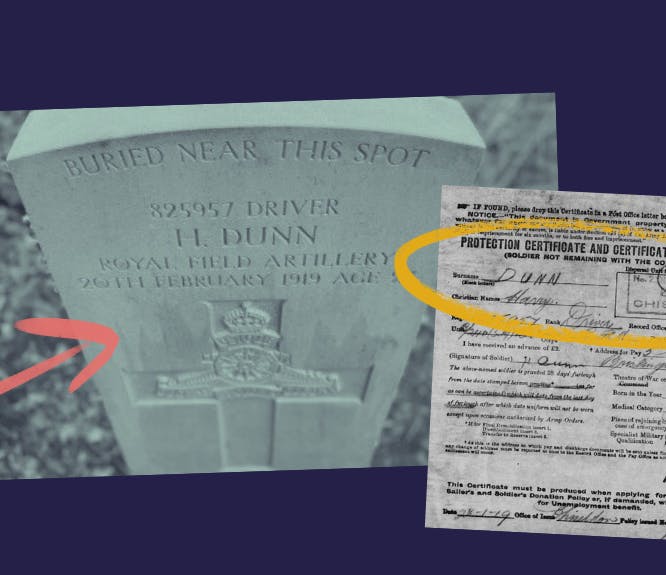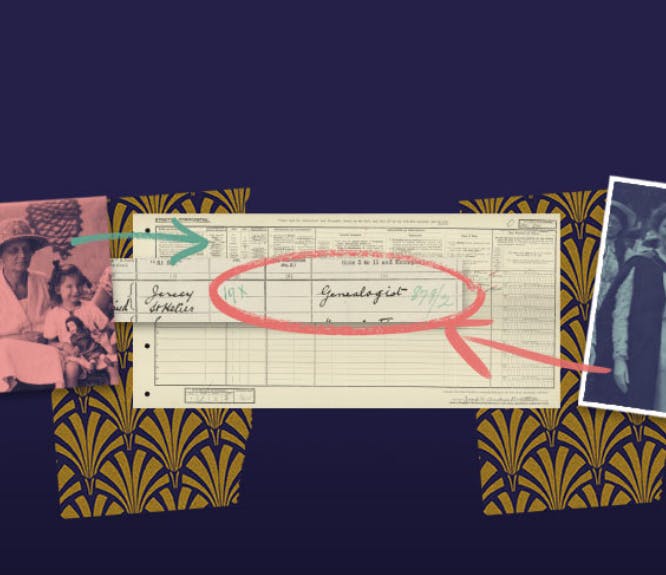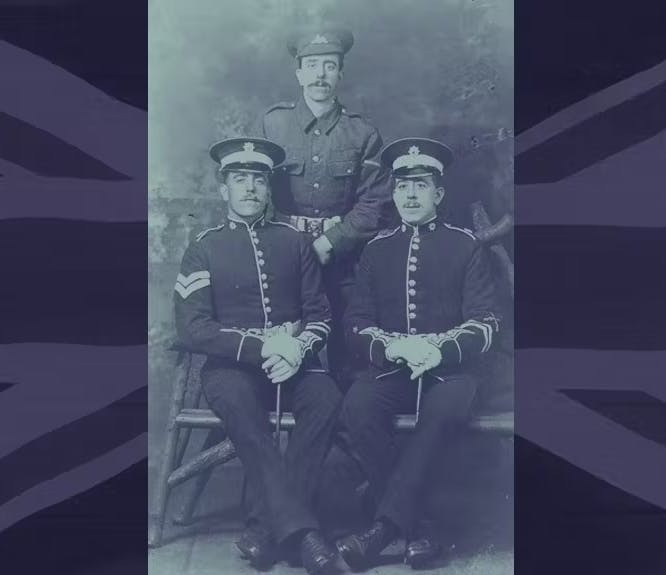What does your ancestor’s handwriting say about them?
7-8 minute read
By Ellie Ayton | September 8, 2022

Some of us inherit our grandmother’s tidy teacher handwriting, or our great-grandfather’s cheeky scrawl. But what if we said it’s possible to reveal a person’s personality just from how they write?
Whether they be author or academic, criminal or carpenter, some believe it possible to uncover traits from how we shape our letters. And because 54% of Brits care more if they receive correspondence that’s handwritten, there is no better time to highlight the importance of our signature scripts.
We asked handwriting expert and graphologist Tracey Trussell to pen her thoughts on the handwriting of people in the 1921 Census of England and Wales and beyond. She also shares the tell-tale signs to watch out for in your ancestor’s scribbles, and even in your own.
What does your handwriting say about you?
Whether your handwriting is cursive, in block capitals, or pretty calligraphy, our expert Tracey tells us her tips for analysing your own script, or even your ancestor’s.
- If handwriting is made of large, stretched-out script, this could lean towards benevolence
- Tipping and slanted letters could indicate finely attuned emotions
- Use of heavy pressure when writing could show a desire to rule
- An aerated composition (where words and sentences are widely spaced) could highlight an ability to maintain a detached view
- Potlids (where the start of downward strokes in the letter p extend upwards, above the stems), could indicate a contentious and argumentative attitude
- Irregular, fast-paced writing could show an unconventional individual, keen to suit themselves
- Connected or joined-up letters may show single-mindedness
- Ink-filled o’s, a’s and rounded parts of d’s could show a propensity to make up stories or tell tales
- Tall stems in h’s, l’s, and t’s may indicate a highly principled individual
- Moving baselines could show someone easily distracted
"‘Handwriting is an amazing device for understanding someone’s personality, as the writer is unconsciously expressing their unique psychological profile on paper, showing that state of mind they were in when they wrote a certain letter. It’s been amazing to dig into Findmypast’s vast historical archives to further understand the personalities of these key figures.’"
Plus, nearly a third of Brits say they feel closer to their ancestors when seeing their handwriting. Finding evidence of your ancestor’s penmanship has never been easier, with Findmypast digitising more family history records every week. You can spot handwriting samples in census records, parish records and even travel records.
The Royal Family
Tracey explored handwriting samples of royals such as Queen Elizabeth II and Queen Charlotte.

Princess Elizabeth and Philip, Duke of Edinburgh, in Malta, pictured in the Illustrated London News, 3 December 1949.
Even aged 22, the young Princess Elizabeth was an ‘effective, commanding and steadfast individual,’ indicated by her large, stretched-out handwriting. The wide spacing shows an open and giving writer. Later, aged 95, another sample shows a smaller, less flamboyant cursive, signifying a ‘desire to keep things real.’
"'The Queen is focusing warmly on her duty to the British people. This selfless altruism is also seen in the right tendencies or in the way the long downstroke stems flick towards the right.'"
In a writing sample from Queen Charlotte (of Bridgerton fame and wife of King George III), Tracey spotted tall capital letters, a reflection of ‘immense pride.’

A snippet showing Queen Charlotte’s signature on her will, signed two weeks before her death in 1818. View the full record here.
Tracey says Charlotte’s tall stems show a ‘desire for achievement’, and narrow letters indicate a private woman who didn’t want others intruding on her affairs.
Winston Churchill
Secretary of State in 1921, this future prime minister was a visitor on 19 June 1921, so he didn’t complete his own return. He did however fill out his family’s return in 1911, which, according to Tracey, speaks of the ‘calibre of his character’ and a ‘high quality of intelligence.'

Winston Churchill’s handwriting on the 1911 Census. View the full record here.
Churchill’s handwriting slopes, according to Tracey, tells a tale of ‘limitless passion.' His aerated composition and downward slashing T-bars show he was an ‘expert at taking a broad, detached view on things’ and was able to ‘influence and inspire.'

Winston Churchill inspecting sailors from HMS Hardy on Horse Guards Parade, 19 April 1940. See the full image in our Photo Collection.
His well-nourished pen strokes, ‘beautifully presented layout,’ Greek style d’s and often ‘excessively broad script’ denote Churchill as someone endowed with creativity and artistic flair.
Contrast this with Tracey’s analysis of Boris Johnson’s handwriting. She claims his penmanship proves he is ‘bullishly optimistic’ and a ‘complex, unconventional’ man who ‘does things to suit himself.' Intriguingly, Tracey says that his left margin drastically narrowed in 2020 during the pandemic, indicating that ‘doubts were creeping in.'
However, she does point out that Boris’s balanced mix of joined and unjoined letters show he is still listening, and thinking more carefully before he writes or speaks.
J.R.R. Tolkien
There’s no denying that Tolkien wrote this 1921 Census record. The beloved Lord of the Rings author had a distinctive handwriting style, which can be seen on maps of Middle Earth and beyond. But what does his handwriting say about him as a person?

The Hobbit author J.R.R. Tolkien and his family on the 1921 Census. View the full record here.
According to Tracey, Tolkien’s individually printed letters show an ‘inventive, curious, imaginative nature’ indicative of a ‘collector of thoughts and random ideas.’ The rounded tops of his n’s show his talent for delivering creatively.
His script is slow, precise and deliberate. Tolkien was so meticulous in filling out his family’s return that he corrected the entry for visitor Mary Jane Grove: he’d forgotten to write her surname in capital letters, as he’d done with the others in his household.
Louisa Martindale
Physician, surgeon and writer Louisa was an active suffragist. Born in 1872, she served with the Scottish Women’s Hospitals in France during the First World War, and as a surgeon in London during the Second World War.

Louisa on the 1921 Census with her partner, Ismay Fitzgerald. View the full record here.
Tracey highlights Louisa’s Greek-style e’s, which shows a ‘cultured, educational background’ and a ‘sense of idealism.’ A mixed bag of T-bars and firm I dots shows Louisa was a ‘stickler for detail.' Her tall stems with loops have pointed tips, revealing she was ‘driven by achievement’ but ‘dissatisfied at an aspirational level at that stage in her life.’
Herbert Rowse Armstrong
Can criminal tendencies be spotted just from someone’s handwriting?
The only solicitor to ever be hanged for murder in England, Herbert Rowse Armstrong was born in Plymouth in 1869. He rose to the rank of major in the Royal Engineers Territorial Force during the First World War.

Major Armstrong, pictured in the Dundee Courier, 14 April 1922. The headline read: ‘Armstrong guilty. Hears sentence of death unmoved.’
He was arrested in 1921 for the attempted murder of a professional rival, Oswald Martin, using arsenic, and was later charged and convicted of the murder of his own wife. Herbert was hanged in Gloucester on 31 May 1922. He protested his innocence until the end.
In 2019, the case was heard in popular TV series Murder, Mystery and My Family. The case was re-examined and the conviction was declared unsafe.

A sample of Herbert’s handwriting from the 1921 Census. View the full record here.
Tracey says that Armstrong’s handwriting reveals impatience, trauma and a willingness to take a risk. She spotted the same traits in Thomas Mucklow’s script.
Mucklow was born in Birmingham in 1864. By 1921, he was working as a carter and living with his wife, Charlotte. Like Armstrong, Mucklow’s ability to rule can be spotted through his heavy pressure, and additional uneven pressure could pinpoint to ‘suppressed anger and unregulated emotion.’

A sample of Thomas Mucklow’s handwriting from the 1921 Census. View the full record here.
He’s thought to be one of the original members of the infamous Peaky Blinders. Mucklow can be found in one of the earliest mentions of the gang in our historical newspapers.

An early mention of the Peaky Blinders and Thomas Mucklow in the Birmingham Mail, 24 March 1890.
He was in prison several times over the years. Tracey says Mucklow tried to present himself as composed and upstanding, but in truth, he could lose his temper quickly: strong, smeary letters show an ‘obstinate, anti-social nature’ and someone who never knew when to quit.
Arthur Vince
This is one of our favourite finds on the 1921 Census: the man who predicted the Second World War. Arthur Vince was a civil servant, living with his wife Gladys and son Bobby. Their first child, Donald, died young in 1919.

View Arthur’s full 1921 Census record here.
While he might not have made it as a fortune teller, Tracey is convinced Arthur was in the wrong line of work. His ‘pasty’ writing shows that Arthur’s natural responses were more through his senses than intellect, and was likely a ‘visual person with a vivid, creative imagination.’ The irregular pressure could show that Arthur didn’t take things too seriously, and mixed capital and lower case letters may show he was vying for attention.
Already have a sample of your ancestor’s handwriting? We’d love to see it. Share your findings with us on Facebook, Twitter or Instagram.
Related articles recommended for you

Celebrating Black British History: why we’re remembering Black British firsts
History Hub

Researching this WW1 grave helped honour a forgotten hero and reunite a family from across the world
Discoveries

Genealogists in the 1921 Census of England and Wales: discover a profession that stands the test of time
History Hub

